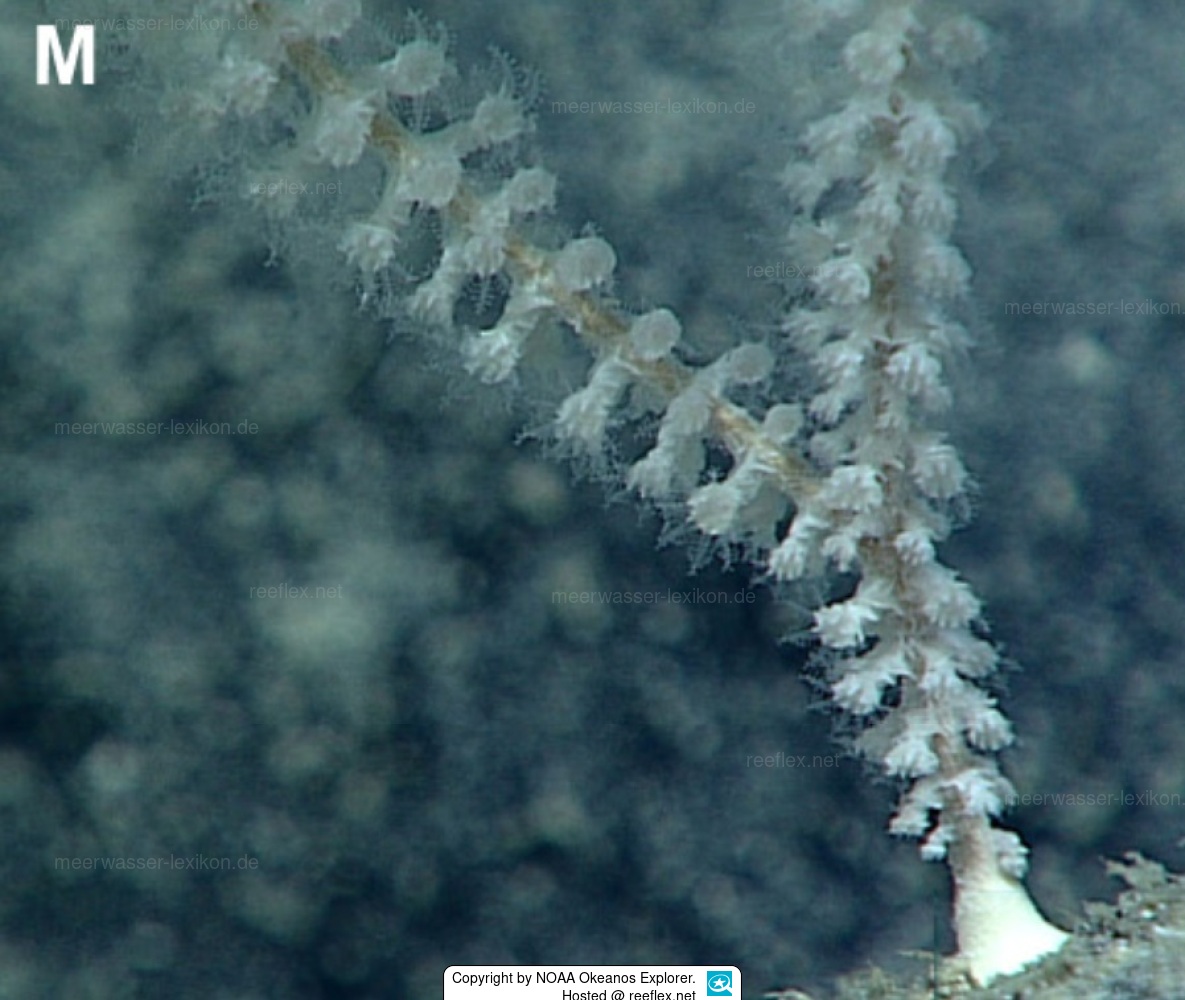Info
Narella merga is a small deep-sea gorgonian in the family Primnoidae and is currently known only from the central Pacific around American Samoa.
Narella merga is most similar to Narella alaskensis Cairns & Baco, 2007 from the Gulf of Alaska (2377-3075 meters depth) and even has an overlapping depth range.
However, Narella alaskensis differs in having more polyps per whorl (4-9), smaller polyps, and much longer medial scales that sometimes bear a longitudinal rib.
Etymology.
The species name "merga" (Latin for a two-pronged pitchfork) is an allusion to the growth habit of the colony.
The coral first forms a basal stem, from which two lateral branches then branch.
Narella merga is most similar to Narella alaskensis Cairns & Baco, 2007 from the Gulf of Alaska (2377-3075 meters depth) and even has an overlapping depth range.
However, Narella alaskensis differs in having more polyps per whorl (4-9), smaller polyps, and much longer medial scales that sometimes bear a longitudinal rib.
Etymology.
The species name "merga" (Latin for a two-pronged pitchfork) is an allusion to the growth habit of the colony.
The coral first forms a basal stem, from which two lateral branches then branch.







 NOAA Okeanos Explorer
NOAA Okeanos Explorer















